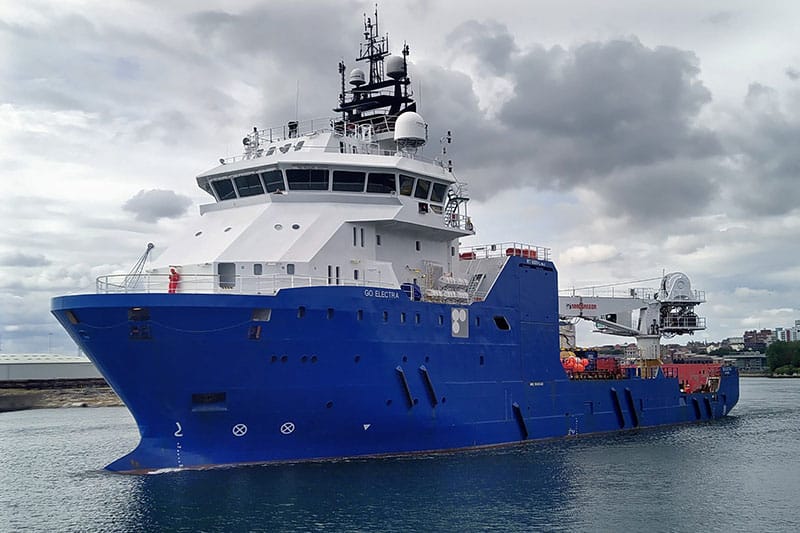The risks and challenges associated with asbestos removal on ships
The issue of asbestos on ships is a crucial one to consider for a broad range of reasons. Those reasons include the very real health risks that direct contact with this naturally occurring fibrous mineral can pose, as well as the varying legal situation for asbestos use around the world.
For much of the 20th century, asbestos was widely used in shipbuilding. The material was chosen on account of such factors as its relatively easy availability, affordability, tensile strength, and ability to resist heat and chemical damage.
By the mid-1970s, the health risks that asbestos presented were becoming more widely known. At this point, the link had been established between inhalation of the substance and a heightened risk of developing potentially fatal health conditions, such as mesothelioma and asbestos-related lung cancer.
While the use of asbestos on ships declined from that point forward, there have been instances in the 21st century of even relatively new ships being found to contain asbestos.
All of these factors make it extremely important to have a good understanding of the risks and challenges associated with asbestos removal on ships.

Who is at risk? The health risks of asbestos exposure
Anyone who has worked in the shipbuilding industries and been in close vicinity to asbestos materials, as well as those who have worked on or otherwise spent time on board ships containing asbestos, could have potentially been exposed to asbestos, and the associated health risks.
It is important to appreciate that if asbestos is in good condition and undisturbed, it is not believed to pose a risk to human health. However, with the peak period of the mineral’s use on ships having been from around the 1900s to the late 1970s, and the material potentially susceptible to deterioration over time, this may have implications for the nature of the risk that certain historical asbestos-containing materials (ACMs) pose on ships today.
If such ACMs do deteriorate or are otherwise disturbed, there could be a risk of them releasing individual asbestos fibres into the air. These fibres, which are barely visible to the human eye, could be inhaled and become lodged in the lungs. That, in turn, could lead over time to the development of health conditions such as mesothelioma or asbestosis.
So, not only those involved in shipbuilding (both today and historically), but also workers in the boat management industry, as well as those at sites where old vessels are now heritage attractions, may be vulnerable to asbestos-related health risks.
Challenges in asbestos removal on ships
The process of managing and – if necessary – removing asbestos from ships is a highly complicated and sensitive one. That is the case partly due to the extremely wide range of areas on a ship where asbestos was formerly used, potentially covering almost every part of a ship, from the bow to the stern.
On United States Navy ships alone, more than 300 asbestos products were used in the construction of vessels from the 1930s to the early 1980s. Asbestos, then, has been present in all manner of ship components down the generations, encompassing insulation materials, fireproofing materials, gaskets, seals, adhesives, flooring, roofing, cables, piping, valves, and many more.
Asbestos, then, could very easily be present in almost any rooms or common areas on ships, such as engine and boiler rooms, navigation rooms, and sleeping quarters. Not all these parts of a ship may be easily accessible, so certain ACMs may go undetected – and therefore unmanaged and unmonitored – for many years.
In order to find, monitor and/or remove suspected or confirmed ACMs, it may often be necessary for the asbestos inspector or removal operative to work in confined areas or at height. This can bring its own complexities for ensuring health and safety.
And, of course, if the decision is made to remove given asbestos materials from a ship, the very greatest care will need to be taken to avoid the uncontrolled release of asbestos fibres during the removal process.
Regulatory compliance and legal obligations
To this day, there is no worldwide ban on the use of asbestos, which can present complexities for the regulatory picture around asbestos on ships. Although in the UK, for example, the importation and use of all forms of asbestos was banned in 1999, in many parts of the world, the hazardous substance continues to be used.
Nonetheless, there are certain international regulations and guidelines that one should be aware of when contemplating the removal of asbestos from ships:
The International Maritime Organization (IMO) regulations
In the early years of the 21st century, the IMO updated the International Convention for the Safety of Life at Sea (SOLAS) 1974, in order to address the issue of asbestos on ships.
The consequence of this move was that, with regard to ships constructed between July 2002 and January 2011, it became prohibited for new installations to use ACMs. In the event of any asbestos-containing materials being found on such ships, a three-year period was allowed for safe removal of the substance.
However, this guidance was revised in 2022. Effectively, then, the current situation is as follows: since 1st July 2002, the installation of ACMs has, in accordance with SOLAS regulation II-1/3-5, been prohibited for all ships, with the exception of some vanes, joints, and insulation.
Meanwhile, from 1st January 2011, any installation of materials in which asbestos is present will, in accordance with SOLAS regulation II-1/3-5, be prohibited, for all ships without exceptions.
National regulations and requirements
Shipbuilding and the subsequent management of ships may be an inherently international industry, but there is also a need for individuals and organisations in these sectors to comply with any relevant national legislation and guidelines.
These include – in the case of the UK – the Control of Asbestos Regulations 2012, also known as CAR 2012. This legislation imposes a “duty to manage” asbestos on those who are responsible for managing non-domestic premises.
Those who are considered a “dutyholder” under CAR 2012 are expected to fulfil certain requirements. Such requirements include taking reasonable steps to determine whether there are ACMs in the given premises, as well as putting together a plan explaining how the risks that such materials present will be managed.
Whatever you propose to do in relation to the management and/or removal of asbestos from a ship for which you are responsible, you must ensure you implement proper protocols and effective safety measures, and are not solely guided by whatever the law states.
Professional expertise and training
The IMO has stated that surveyors and inspectors tasked with investigating asbestos on ships should be trained in recognising asbestos and ACMs.
The organisation has further said that such professionals should be trained in the taking of samples, and should be instructed when to request the help of experts to carry out investigation on board ships. In addition, the IMO has said that surveyors and inspectors should be aware of the dangers of asbestos and should, in the process of carrying out their corresponding duties, take all necessary precautions.
So, what implications will all of this have for ensuring any work in relation to asbestos on board your ship is undertaken by suitably qualified people?
Well, it should certainly mean that you seek out the services of certified asbestos professionals, including if the decision is made to remove asbestos from the given vessel, instead of simply managing it in place.
It should also mean ensuring that any workers involved in the removal of asbestos from a ship for which you are responsible, have suitable and up-to-date training. There may be a need for such professionals to undertake asbestos awareness training and/or dedicated asbestos removal courses.
Risk mitigation strategies
With asbestos materials on ships taking such an exceedingly wide range of forms, and potentially greatly varying in terms of their age, condition, and risk to human health, it is crucial that you are well-informed on the asbestos situation for any vessel for which you are responsible.
This will necessitate comprehensive risk assessments and surveys prior to any decisions being made on the form any removal process takes.
Once you are well-informed on the presence and status of any ACMs in a given space on the ship, you will be able to develop suitable asbestos removal plans and strategies. Regular monitoring and air sampling during the removal process itself will further help ensure the targeted ACMs are effectively removed, as well as the safety of anyone who may otherwise be at risk.
Collaboration and communication
Any easy-to-overlook factor when it comes to asbestos removal from ships, is the importance of effective communication among the various stakeholders involved in the removal process.
The network of stakeholders in any given asbestos removal operation – encompassing such figures as shipyard managers, contractors, and workers – might be even more complicated than is the case for premises on land.
So, you will need to be diligent in ensuring that every relevant party is constantly aware at any given time of the situation in relation to asbestos on a given ship. As part of this, you must also make sure everyone is informed on the decisions taken to remove any such materials.
Conclusion: are you pursuing safe and effective asbestos removal from your ships?
In the above guide, we have sought to outline the many real risks and challenges entailed in the removal of asbestos from ships. We have covered such aspects as the wide range of areas of a vessel in which asbestos might be present, as well as the regulatory picture, health and safety considerations, and the importance of effective training, communication, and collaboration.
Ultimately, anyone responsible for the management and/or removal of asbestos from a ship – such as those in the shipbuilding and/or boat management industries – must prioritise the highest standards of safety and compliance.
If you are such an industry professional, why not reach out to well-qualified asbestos experts who can help with your efforts to prioritise effective and compliant asbestos removal and mitigation? Please feel free to email us today, or call the Oracle team, to request your free asbestos quote.

Written by Jess Scott
Jess Scott has been an all-round asbestos consultant since 1996. That’s nearly 3 decades of asbestos knowledge. He spends his time sharing that knowledge with the team at Oracle and with their clients. Jess's goal is, and always has been, to use my expertise in helping people to comply with the law. This legal compliance ultimately helps to protect everyone from the harmful effects of asbestos. Jess has acted as an asbestos expert witness in legal cases and is involved in many asbestos educational activities throughout the UK.
